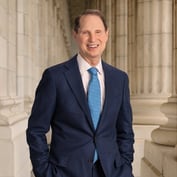WASHINGTON (AP) — Senate leaders moved toward a showdown Wednesday with votes on rival Democratic and Republican plans for extending broad tax cuts that will otherwise expire in January.
See also: Battle Lines Drawn on Bush Era Tax Cuts
In an announcement that seemed to surprise Democrats, Senate Minority Leader Mitch McConnell, R-Ky., said on the Senate floor that he was accepting a Democratic offer to hold back-to-back roll calls on both parties’ bills, with each measure requiring just a simple majority for passage.
The new plan puts pressure on Democrats to avoid an embarrassing defeat of their own tax cut plan, which closely resembles proposals by President Barack Obama to extend tax cuts for all but the nation’s highest earners. Republicans want the top earners to keep their tax cuts, too.
It also raises the stakes for some Democratic senators in close re-election races. The Democratic measure includes items like a sharply higher tax on inherited estates, which could be an issue in states with a high cost of living or with many farms and ranches.
“A vote for the Democrat plan is a vote to put these farms and ranches out of business,” McConnell said.
Until now, the Senate had planned to vote only on the Democratic bill under rules requiring 60 votes to allow debate to proceed. Democrats would not be able to reach that number, but it is often easier for wavering lawmakers to vote for such a procedural motion than it is to vote for a bill on final passage.
“The only way to force people to take a stand is to make sure that today’s votes truly count,” McConnell said, adding, “Nobody on the other side can hide behind a procedural vote while leaving their views on the actual bill itself a mystery to the people who sent them here.”
Even so, Senate Majority Leader Harry Reid, D-Nev., expressed confidence.
“Our bill has the support of President Obama, has the support of the Democratic caucus, it has the support of the American people,” he said.
In a statement, the White House restated its backing for the plan.
“All sides agree on the need to extend the tax cuts for the middle class,” it said. “This legislation reflects that consensus, and should not be held hostage while debating the merits of another tax cut for the wealthy.”
Democrats have little margin for error. There are 51 Democrats and two independents who usually vote with them.
Sen. Joseph Lieberman, I-Conn., said Wednesday that he will vote against the Democratic bill because he thinks lawmakers should instead be trying to reduce the deficit. Sen. Jim Webb, D-Va., seemed to indicate that he would vote “no” as well, saying he would not vote to increase any taxes on earned income such as salaries.
Vice President Joe Biden was available and could be brought to the Senate to cast a tie-breaking vote if needed, White House and congressional officials said.








 July 25, 2012 at 10:34 AM
July 25, 2012 at 10:34 AM










